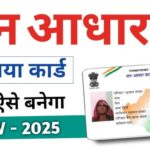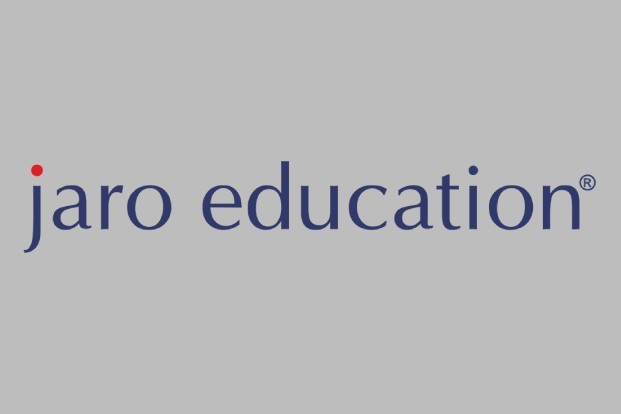In the digital age, Rajasthan stands out as a model of citizen-centric governance through its innovative e‑Mitra kiosks and the Bhamashah ID / Bhamashah Card system. These initiatives enable millions of residents to access government services—such as certificates, scheme registrations, bill payments, and social benefit transfers—with transparency, convenience, and minimal red tape.
This article presents a detailed guide on the history, structure, usage, benefits, and FAQs for both e‑Mitra and Bhamashah ID. Whether you’re a first-time user or a community leader wanting to spread awareness, this resource equips you with everything you need.
Table of Contents
1. What Are e‑Mitra and Bhamashah ID?
1.1 e‑Mitra
Launched in 2006 by the Government of Rajasthan, e‑Mitra is a network of public kiosks providing access to over 400 government and private services—including electricity, water, land records, certificates, and more. Operated through common service centers (CSCs), it brings digital service delivery to the remotest corners of the state.
1.2 Bhamashah ID / Bhamashah Card
The Bhamashah Card scheme, introduced in 2014, assigns each resident of Rajasthan a unique Bhamashah ID linked to their family’s financial and demographic data. The ID serves as a digital identity for seamless access to welfare benefits, pension transfers, subsidies, and government schemes.
2. How e‑Mitra & Bhamashah Work Together
These two platforms are designed to complement each other:
Bhamashah ID enables authentication and verification of identity for scheme entitlements.
e‑Mitra kiosks act as physical access points where citizens can log in using their Bhamashah ID or Aadhaar to avail services.
The integration simplifies processes like Direct Benefit Transfer (DBT) and certificate generation, making Rajasthan a pioneer in digital governance.
3. Key Features of e‑Mitra & Bhamashah System
Services on e‑Mitra Kiosks:
Birth, death, caste, income, and domicile certificates
Utility bill payments (electricity, water)
PDS (ration) services and Kerosene card
Government scheme applications like Ladli, Anukampa Pension, Old Age Pension
PAN and GST services
Land record (Jamabandi) access
Scholarships and educational benefits
Vehicle tax payments and permit renewals
Features of Bhamashah ID:
Family-linked unique ID—each family’s head holds all records
DBT households receive transfers directly into verified bank accounts
Integration with Jan Aadhaar, SSO portal, and welfare departments
Supports women’s financial inclusion—often linked to women head of household
4. How to Enroll for Bhamashah ID
Steps:
Visit your local e‑Mitra kiosk or sub-division office.
Fill out the Bhamashah enrollment form.
Provide:
Aadhaar number for each family member
Bank account details of the head of family
Basic demographic details
Submit biometric authentication.
Receive your printed Bhamashah card & ID.
Once activated, you can use it at e‑Mitra kiosks and digital portals.
5. Using e‑Mitra & Bhamashah ID: Step-by-Step
Step 1: Visit an e‑Mitra Kiosk
Locate your nearby center using the official portal or mobile directory.
Step 2: Login
Use your Bhamashah ID / Aadhaar to authenticate.
Step 3: Select Service
Choose from 400+ options like certificates, scheme applications, bill payments, or land records.
Step 4: Submit Required Documents
Upload or present documents where needed.
Step 5: Pay Fees (if applicable)
Most certificate or application services require a nominal processing fee.
Step 6: Download or Receive Output
You may get digital certificates instantly or receive them via SMS/email/physical print copy.
6. Expansion: From Urban to Rural Rajasthan
Rajasthan government committed to digital inclusion, expanding services to:
More than 7,000 e‑Mitra kiosks across urban and rural areas
Common service centers (CSCs) in villages
Mobile e‑Mitra vans in remote tribal areas
Gram Vaani voice-based services for illiterate users
This ensures even marginalized communities can access government programs without digital illiteracy barriers.
7. Benefits to Citizens and Government
For Citizens:
Reduced time and travel costs
Transparent, traceable applications
Secure identity via Bhamashah ID and Aadhaar
Faster approvals and DBT
Paperless, eco-friendly processes
For Government:
Efficient welfare delivery via DBT
Lower corruption and intermediary fees
Real-time data for planning and analytics
Streamlined administration
8. Integration with Other Government Platforms
Bhamashah ID and e‑Mitra integrate seamlessly with:
SSO Rajasthan portal
Jan Aadhaar program
State scholarship portal
Public distribution system
Ladli scheme, pension portals, and health services
Once registered, your ID becomes your passport to multiple government touch points.
9. Common Issues & Resolutions
Issue: Bhamashah ID Not Active
Fix: Visit e‑Mitra kiosk and verify your Aadhaar and biometric; ask for reactivation.
Issue: Cannot Access e‑Mitra Services Online
Fix: Ensure Bhamashah is linked with Aadhaar and active; update through the portal or kiosk.
Issue: Incorrect Family Data Showing
Fix: Submit correction form with proofs at kiosk or nodal office.
Issue: Device or Kiosk Malfunction
Fix: Report service agent or contact the e‑Mitra helpline for troubleshooting.
10. Data Privacy and Security
The system is governed by strict data protection protocols:
Aadhaar-based biometric authentication
Government-certified data centers with encryption
Role-based user access for operators
Audit trails for each transaction
Legal compliance with the IT Act and state data policies
Bhamashah ID is linked to the head of family and preferably women’s accounts to enhance financial inclusion and control.
11. How to Check Scheme Benefits Using Bhamashah ID
Online:
Visit sso.rajasthan.gov.in, sign in via Bhamashah ID or Aadhaar.
Access dashboards for welfare schemes like Ladli, Old Age Pension, Mukhyamantri Chiranjeevi Health Insurance.
Download benefit slips or status updates.
Offline:
Visit e‑Mitra kiosk; operator fetches benefits linked to your ID.
Receive printouts or SMS updates on your application or payments.
12. e‑Mitra Agent’s Role
Though kiosks assist citizens, e‑Mitra agents play a vital role:
Assisting with document uploads, digital forms
Guiding through application workflows
Handling biometric and payment gateways
Bringing kiosks to remote populations via outreach
Educating citizens about Bhamashah and other services
Agents earn commission but follow strict service standards to protect users.
13. Success Stories and Social Impact
Millions of households now receive subsidy/disbursements into verified bank accounts.
Scheme inclusion for marginalized women heads of households.
Greater uptake of educational scholarships and scheme persistence tracking.
Cases where villages track beneficiaries in real time via ID integration.
Rajasthan has become a national example of scalable digital identity-driven welfare.
14. Future Enhancements and Roadmap
Upcoming innovations include:
Voice-enabled kiosks in local dialects for accessibility
AI/chatbot services for scheme queries
Biometric-enabled mobile e‑Mitra vans for tribal regions
Integration with state-level health records and school databases
Additional public-private partnerships for expanding kiosk coverage
The goal: universal digital access across all services.
Conclusion
e‑Mitra kiosks and the Bhamashah ID system showcase how technology can drive inclusive governance. From rural areas to cities, citizens can access services, benefits, and documentation seamlessly—cutting time, costs, and intermediary hurdles.
By empowering individuals through digital identity and local touchpoints, Rajasthan is championing a future where government services are accessible, transparent, and citizen-friendly.
Frequently Asked Questions (FAQs)
Q1: What is Bhamashah ID and how is it used?
A: Bhamashah ID is a unique family-based identification number for Rajasthan residents. It enables welfare scheme access, digital authentication, and family data linking for transparent benefit delivery.
Q2: What services can be accessed via e‑Mitra kiosks?
A: Over 400 services, including certificates (birth, income, caste), scheme applications, utility bill payments, land records, scholarships, and more.
Q3: How do I get a Bhamashah ID?
A: Visit an e‑Mitra kiosk with Aadhaar and bank details, complete biometric verification, and fill out the registration form to receive your card and ID.
Q4: Can I use my Bhamashah ID online?
A: Yes. You can log in to platforms like SSO Rajasthan using the ID to access various digital services.
Q5: What if my family details are incorrect in the Bhamashah portal?
A: Submit a correction request with proof at any e‑Mitra kiosk or regional nodal office.
Q6: Is there any fee to register for Bhamashah ID?
A: Typically, the registration service may be free or incur a minimal nominal charge at e‑Mitra kiosks; often waived under special drives.
Q7: How safe is my personal data with Bhamashah ID and e‑Mitra?
A: The system uses Aadhaar-based biometric authentication, encrypted storage, and strictly regulated access protocols to ensure data privacy and security.
Q8: How can I check benefit transfers using Bhamashah?
A: Log in to SSO portal or visit an e‑Mitra kiosk. You can check status, download slips, or get SMS/print evidence of any DBT or scheme-related payout.











